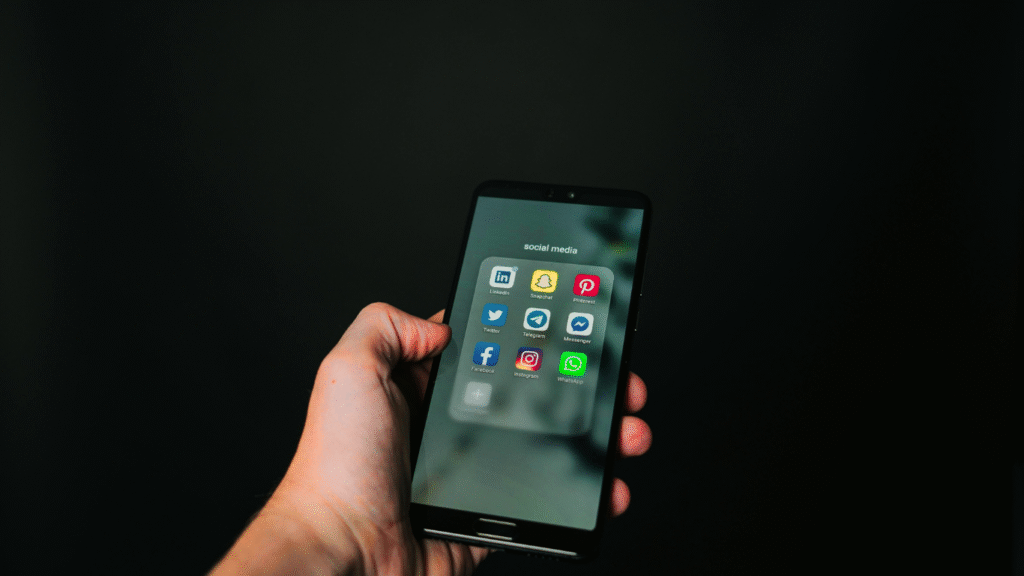What Are the Differences Between Traditional Marketing and Digital Marketing?

In an age where businesses are inundated with an array of communication channels—from social media and streaming platforms to television, print, and direct mail—grabbing and maintaining consumer attention has become more challenging than ever. As consumer behavior evolves rapidly in response to technology, businesses must make informed decisions about how and where to market their products or services.
At the core of this decision lies a fundamental question: should a business invest in traditional marketing, digital marketing, or a combination of both? Understanding what are the differences between traditional marketing and digital marketing is not just a matter of preference; it’s a strategic necessity. The choice affects how brands are perceived, how effectively messages are delivered, how budgets are allocated, and ultimately, how successful a campaign is in generating leads and conversions.
This comprehensive article breaks down the distinctions between these two major branches of marketing. We’ll explore how they differ in terms of methodologies, cost structures, audience targeting capabilities, engagement opportunities, performance tracking, and overall suitability for different types of businesses and industries. By the end, you’ll be equipped with the insights needed to craft a marketing approach that aligns with your business goals and audience behaviors.
Introduction to Marketing Approaches
Marketing refers to the activities and processes companies use to attract potential customers and retain existing ones. These efforts include promoting, selling, and distributing a product or service. As technology and consumer behavior have evolved, marketing has branched into two dominant categories: traditional marketing and digital marketing.
Traditional marketing represents the classic form of advertising that existed before the internet era. It relies on offline media such as newspapers, radio, and television. This approach is often perceived as more established and credible, especially among older demographics.
Digital marketing, by contrast, leverages the internet, mobile devices, social platforms, and data analytics to reach targeted audiences. It allows businesses to interact with consumers in real-time, track performance, and scale efforts cost-effectively.
Choosing between these strategies or combining both requires a deep understanding of your audience, goals, and available resources.
What is Traditional Marketing?
Traditional marketing uses conventional and physical channels to reach a broad consumer base. It’s been the foundation of promotional activities for decades and includes a variety of media formats:
Common Methods:
- Print Media: Newspapers, magazines, flyers, brochures
- Broadcast: Television and radio commercials
- Outdoor Advertising: Billboards, posters, transit ads
- Direct Mail: Postcards, catalogs, letters
- Telemarketing: Phone calls promoting offers or conducting surveys
These strategies are particularly effective for local businesses or companies targeting older audiences who consume media offline.
Advantages of Traditional Marketing:
- High Trust and Authority: Consumers often consider print and broadcast advertisements more credible. Brands seen on TV or in magazines are perceived as more established.
- Tangible Formats: Physical marketing materials such as brochures and mailers offer a lasting, tactile experience that digital content lacks.
- Broad Reach: Traditional advertising can reach vast numbers of people quickly, especially in local or regional markets.
Disadvantages of Traditional Marketing:
- High Costs: Creating and distributing print ads or producing TV commercials is expensive, often requiring large upfront investments.
- Limited Targeting: Campaigns are aimed at general audiences and lack the granularity needed for niche markets.
- Difficult Tracking: It’s challenging to measure the effectiveness of a campaign. ROI is typically based on estimates or indirect indicators like foot traffic.
What is Digital Marketing?
Digital marketing encompasses all marketing efforts that utilize the internet and digital technologies. It allows businesses to connect with current and potential customers through channels such as search engines, websites, social media platforms, email, and mobile apps. Unlike traditional marketing, which often delivers a single message to a wide audience, digital marketing offers the power to create personalized and targeted campaigns in real time.
Key Components of Digital Marketing:
- SEO (Search Engine Optimization): Enhancing website visibility in search engine results to attract organic (unpaid) traffic.
- PPC (Pay-Per-Click): A model of internet marketing in which advertisers pay a fee each time their ad is clicked, commonly used in platforms like Google Ads.
- Content Marketing: The strategic creation and distribution of valuable, relevant content (blogs, videos, infographics) to attract and engage a defined audience.
- Social Media Marketing: Using platforms like Facebook, Instagram, LinkedIn, and Twitter to promote products and engage directly with customers.
- Email Marketing: Sending personalized emails to prospects and customers to build relationships, nurture leads, and drive conversions.
- Affiliate and Influencer Marketing: Collaborating with individuals or organizations that promote your products in exchange for commission or sponsorship.
Advantages:
- Highly Measurable: Digital tools offer detailed analytics and tracking, allowing businesses to measure metrics such as impressions, clicks, conversions, and ROI in real time.
- Precise Targeting: Marketers can reach highly specific audiences based on demographics, interests, online behavior, and even location.
- Interactive: Digital marketing enables two-way communication. Consumers can interact with brands via comments, reviews, shares, and direct messaging, fostering stronger engagement.
- Cost-Effective: Digital campaigns are often more affordable than traditional advertising. Businesses can run campaigns on small budgets and scale up as they see results.
- Flexible and Adaptable: Content and campaigns can be easily adjusted based on performance metrics or market trends.
- Global Reach: A single campaign can be deployed across the globe instantly, making it ideal for businesses seeking international exposure.
Disadvantages:
- Ad fatigue: Users may ignore digital ads due to oversaturation.
- Security concerns: Risks involving data privacy.
- Technical barriers: Requires internet access and a learning curve.
1. Medium of Communication

Traditional marketing uses physical media, including:
- TV and radio
- Print materials
- Billboards
Digital marketing uses online channels:
- Websites and blogs
- Social media platforms
- Search engines and emails
2. Cost and Budget Considerations
Traditional marketing generally requires more substantial budgets:
- TV ad production can cost thousands to millions of dollars.
- Billboard rentals and newspaper ads are expensive.
Digital marketing is scalable:
- Google Ads can start with a budget as low as $5/day.
- Organic social media and content marketing can be low-cost or even free.
Key Insight: Digital marketing offers better ROI for small to medium businesses.
3. Targeting Capabilities
Traditional: Mass targeting — message goes to a general audience.
- E.g., A radio ad reaches all listeners regardless of interest.
Digital: Specific targeting using data insights.
- E.g., Facebook Ads allow segmentation by age, gender, interests, and location.
4. Audience Engagement
Traditional: One-way communication.
- The audience receives but doesn’t respond directly.
Digital: Two-way interaction.
- Consumers can comment, like, share, and message.
- Marketers can respond, personalize, and foster dialogue.
This interaction strengthens brand loyalty and enhances customer experience.
5. Measurability and Analytics
Traditional marketing offers limited insights:
- Estimates based on surveys or viewer data from rating agencies.
Digital marketing provides detailed metrics:
- Page views, bounce rate, conversions, CTR (click-through rates), CAC (customer acquisition cost)
- Real-time dashboards via Google Analytics or social media tools
6. Speed of Results
Traditional campaigns require longer planning and deployment times:
- Weeks or months for ad production
Digital marketing offers almost immediate outcomes:
- Launch a Google Ad and start seeing traffic within hours
Agility allows marketers to adjust strategies in real-time.
7. Campaign Lifespan and Longevity
Traditional media:
- TV spots or print ads have a short airing/publishing cycle.
- Physical materials can persist (e.g., magazine copies), offering extended visibility.
Digital media:
- Blog posts and YouTube videos can provide evergreen value.
- SEO can generate leads months or years after publishing.
8. Geographic Reach
Traditional marketing is more localized:
- Radio, newspapers, and billboards serve specific regions.
Digital marketing is global:
- Websites, emails, and social posts can be accessed anywhere in the world.
This makes digital marketing especially useful for international or eCommerce businesses.
9. Customer Journey Tracking
Traditional:
- Marketers struggle to identify which part of the campaign drove conversions.
Digital:
- Tracks the entire journey: Ad click → Website visit → Purchase → Email follow-up
This insight helps improve funnels and conversion rates.
10. Adaptability and Flexibility
Traditional campaigns are rigid:
- Once published, hard to modify or cancel.
Digital campaigns are agile:
- A/B testing is easy.
- Content can be updated instantly.
This allows businesses to adapt based on user behavior or market trends.
Which Strategy Should You Choose?

The ideal approach depends on several factors:
- Your audience: Are they tech-savvy and spending time online, or are they more accustomed to traditional media?
- Your budget: Do you have the resources for expensive TV spots or print ads, or are you working with a more modest digital budget?
- Your goals: Are you aiming for broad brand awareness, or are you focused on trackable conversions and ROI?
Hybrid Approach:
Combining both strategies often yields the best results. Businesses can benefit from the strengths of both traditional and digital methods. For example:
- Use billboards or TV commercials to build broad awareness, with a QR code or short URL that leads consumers to a landing page.
- Combine print mailers with email follow-up and retargeting ads to increase conversion chances.
- Pair radio ads with a strong social media campaign to reinforce brand recall.
This integrated strategy ensures comprehensive brand coverage and maximizes both reach and effectiveness.
Conclusion
So, what are the differences between traditional marketing and digital marketing?
They vary in nearly every dimension from delivery method and audience engagement to cost structure, targeting precision, and analytics capabilities.
Traditional marketing continues to hold value for its credibility and ability to reach broad demographics in a tangible way. Digital marketing, however, has become essential due to its speed, scalability, interactivity, and precision.
The most effective approach is not necessarily choosing one over the other—but rather understanding your unique business needs and audience preferences. A strategic combination of both methods can lead to a powerful, cost-efficient, and comprehensive marketing effort. see
